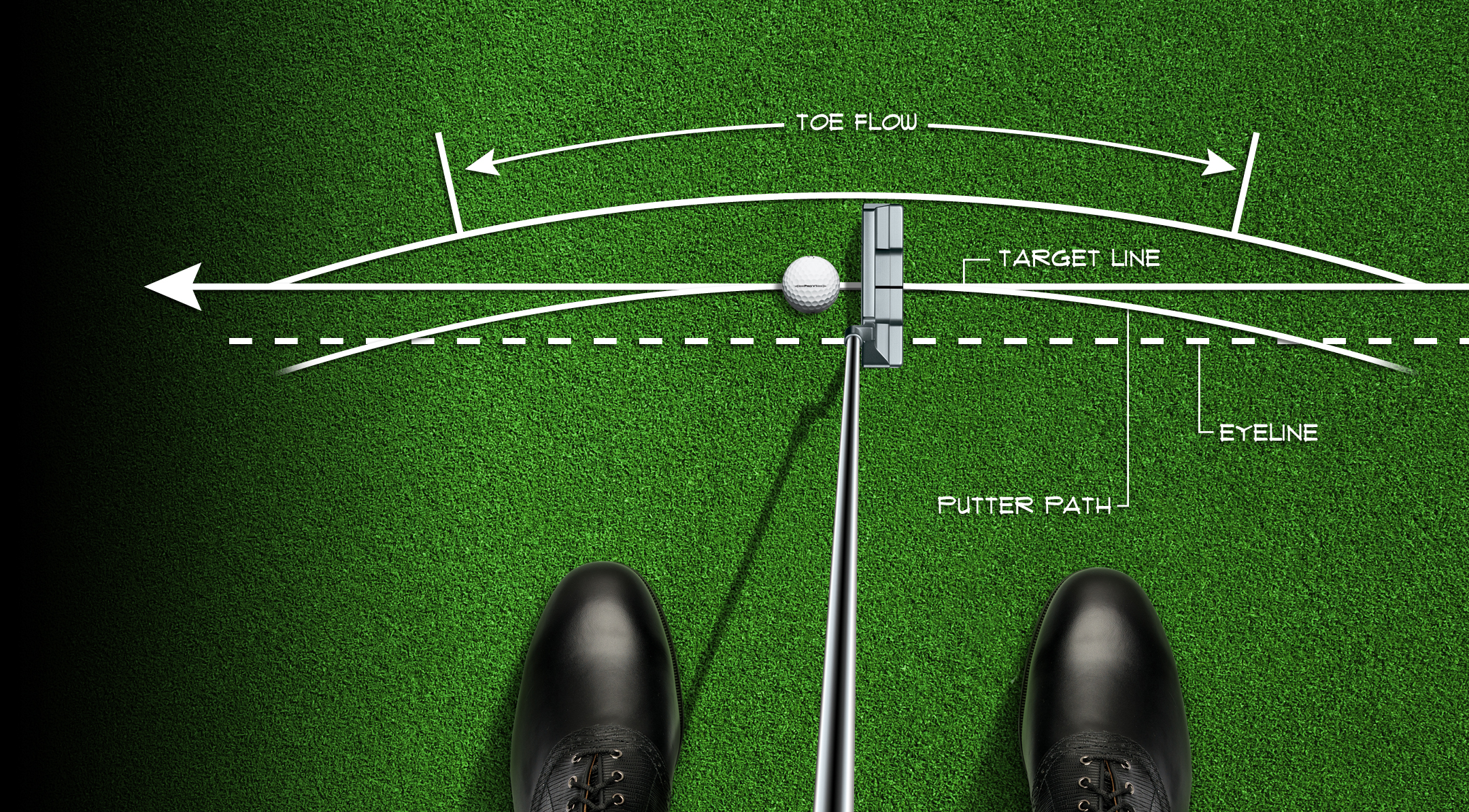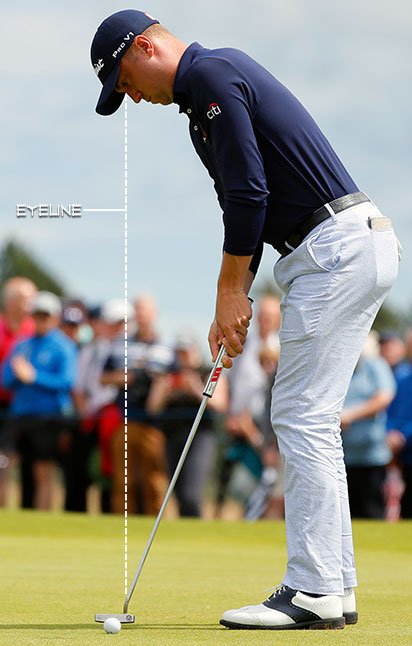The Art of Putting
Putter Selection Guide
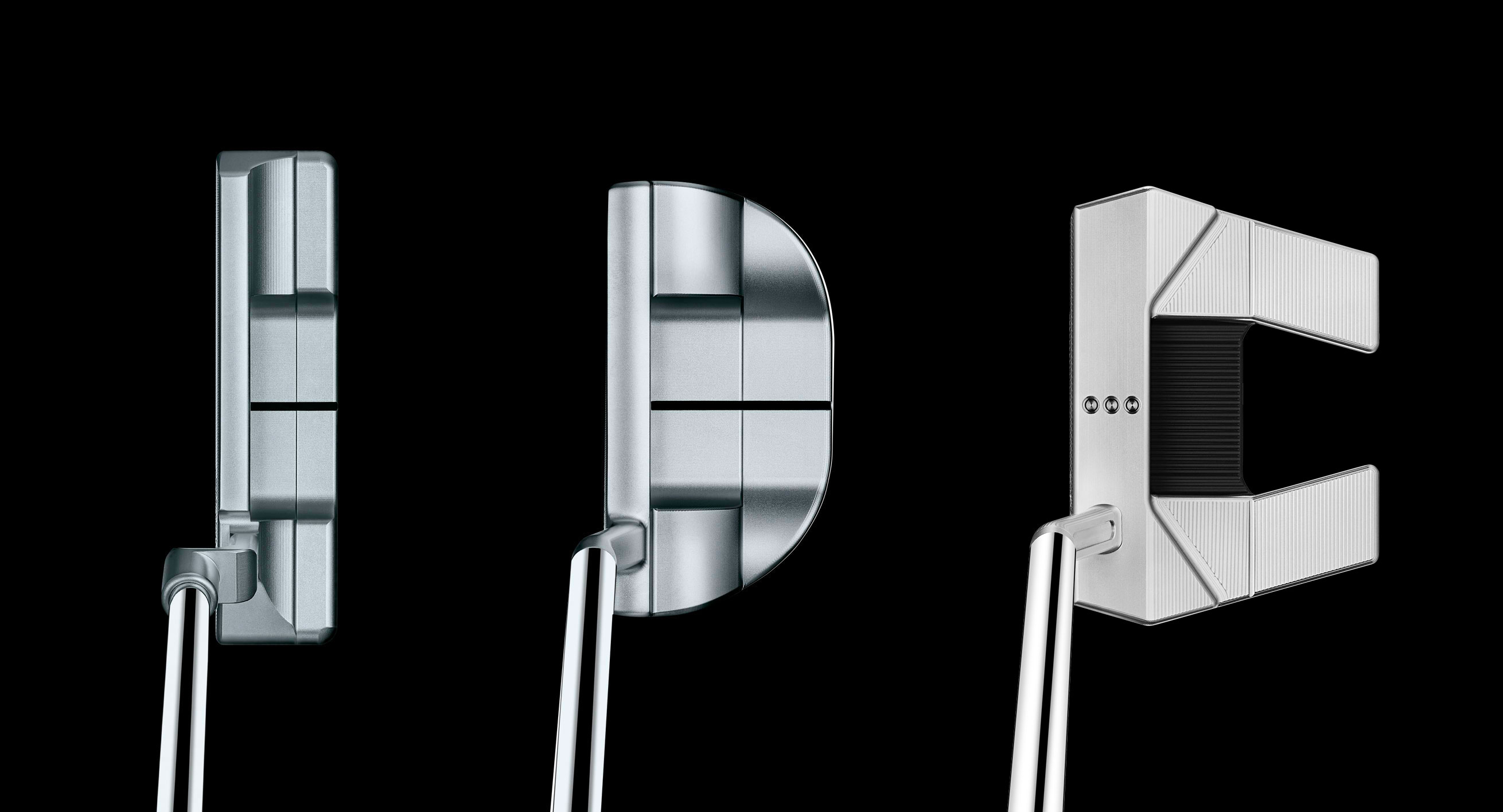
Putters are personal
Many players pick a shape that complements their stroke. Players with technical strokes or who use their putter for alignment may benefit from square shapes and mechanical necks. Players who want to rid themselves of technical thoughts may prefer softer lines and flowing necks.
All Scotty Cameron putters are precision milled in the USA to extremely tight tolerances so that the Tour-validated specifications of the face, sole and neck are consistent for every putter and player.
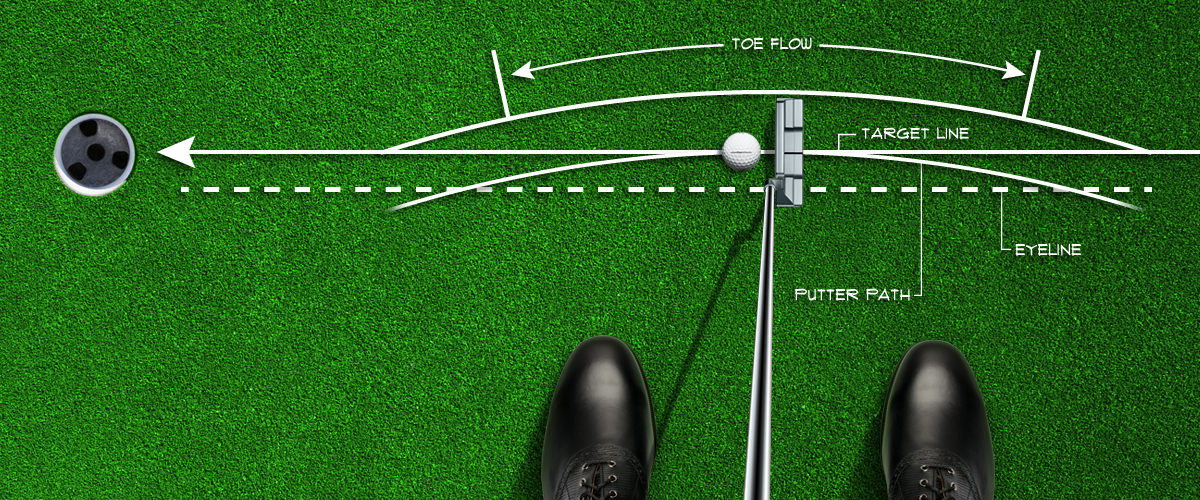
Putters are not pendulums
Putters do not swing vertically back and through along the target line. Because of lie angle, the proper putting stroke moves along an arcing path: slightly inside of the target line, back to square, then to the inside again after impact.
The proper length putter correctly sets eye position just inside the target line, and the correct amount of toe flow allows the putter to flow squarely to the proper arcing path throughout the stroke.
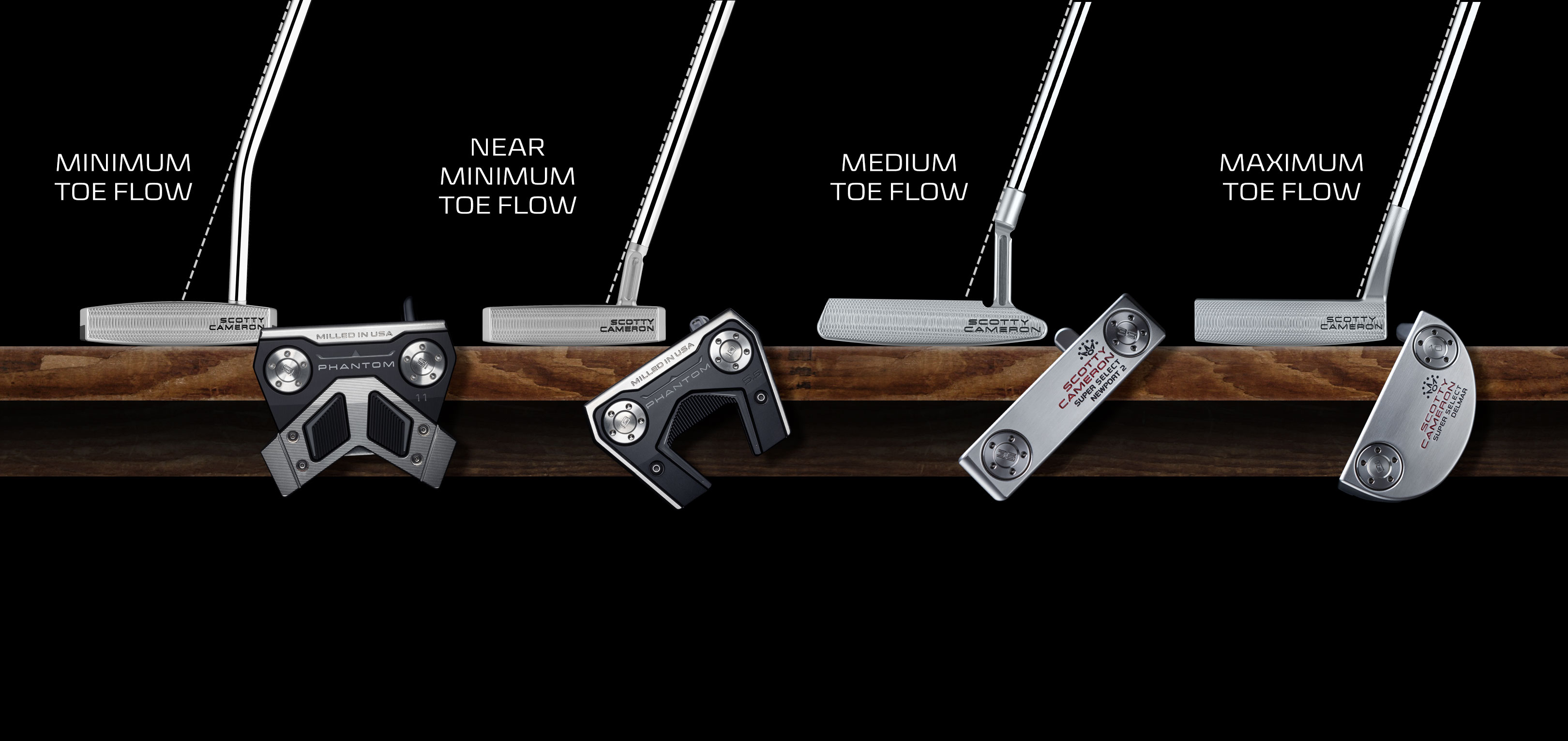
Everyone Needs Toe Flow
In order for the putter head to move squarely along the proper arcing path, the toe of the putter must "flow" throughout the stroke. How and where the neck or shaft of the putter joins the head determines its toe flow.
Be sure to choose a putter that either flows naturally along the proper arching path, or helps to correct it. This will reduce the tendency to manipulate the putter face with your hands. The best way to find the toe flow that corrects or complements your stroke is to hit straight, flat putts from 20 feet to see what works best.
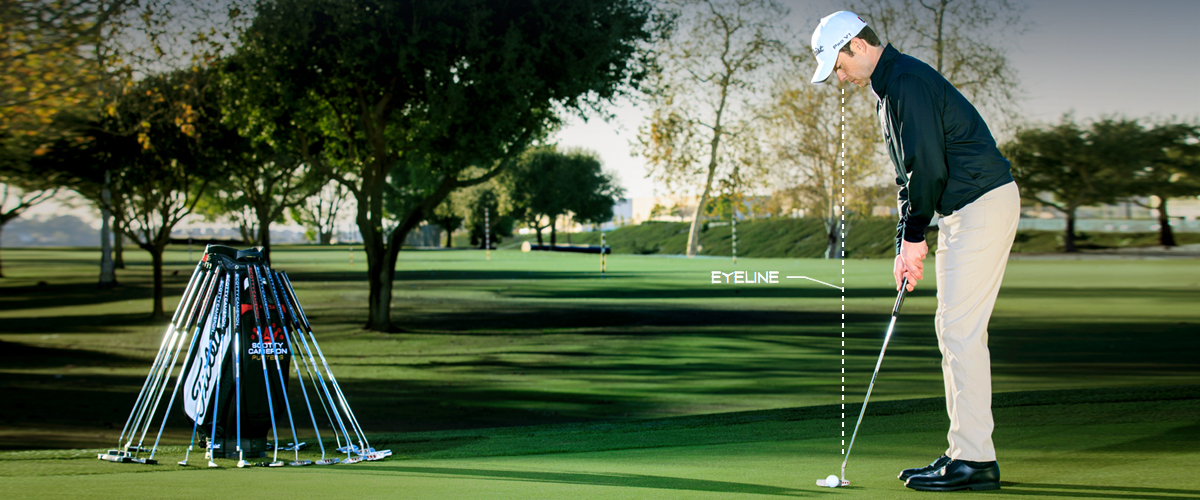
Length Sets Eye Position
If your putter is too long, your setup posture will be too upright with your eyes set too far inside the target line. If your putter is too short, your setup posture will be too hunched over with your eyes set too far outside the target line.
The ideal putter length sets your eyes 1-2" inside of the target line to allow you to execute the proper arcing putting stroke while maintaining good posture and balance.
Neck
Neck design/position on a putter head affects putter performance. Shorter necks or shaft bends increase toe flow, resulting in a putter that swings more freely in an arc.
Longer necks or shaft bends decrease toe flow, supporting a less arcing stroke. Shaft axis closer to a putter's heel increases flow, while shaft axis closer to the center (like straight shafted putters) produces a face-balanced putter for a straighter, more mechanical stroke.
Grip
A grip should complement the design of the putter. Smaller grips promote a more flowing, arcing stroke and generally pair well with higher toe flow putters. Larger grips promote a more “square to square” putting stroke and pair well with face balanced putters. Choose a grip that feels good in your hand and supports the design of your putter and your stroke type.
Loft/Lie
Scotty Cameron Putter Studio research shows that a ball pushes down slightly into the grass on a green, and that 3.5° of loft is needed to lift the ball up and on to the surface for a smooth roll.
The key to finding the proper lie angle is finding the correct putter length. Standard lie angle works for the vast majority of players if they have the correct length.
Weight
For most players, the standard Scotty Cameron weight configuration will produce the ideal balance and feel to execute the proper stroke.
If your stroke tends to decelerate, if your hands get too active, or if you have too much wrist break, you should consider a heavier head or a Dual Balance putter that is heavier overall.
Putter Specifications
| Model |
RH/LH |
Lengths |
Loft |
Lie |
Neck |
Toe Flow | Offset |
Stock Grip |
|---|---|---|---|---|---|---|---|---|
| Newport |
RH |
33", 34", 35" |
3.5° |
70° |
I-Beam Plumbing | Mid | Full Shaft | Pistolini Plus |
| Newport Plus |
RH |
33", 34", 35" |
3.5° |
70° |
I-Beam Plumbing |
Mid |
Full Shaft |
Pistolini Plus |
| Newport 2 |
RH/LH |
33", 34", 35" |
3.5° |
70° |
I-Beam Plumbing | Mid | Full Shaft | Pistolini Plus |
| Newport 2 Plus |
RH |
33", 34", 35" |
3.5° |
70° |
I-Beam Plumbing |
Mid | Full Shaft | Pistolini Plus |
| Newport 2.5 Plus |
RH/LH |
33", 34", 35" |
3.5° |
70° |
I-Beam Jet |
Mid-High |
3/4 Shaft |
Pistolini Plus |
| Fastback 1.5 |
RH |
33", 34", 35" |
3.5° |
70° |
I-Beam Jet |
Mid |
Full Shaft |
Pistolero Plus |
| Squareback 2 |
RH |
33", 34", 35" |
3.5° |
70° |
I-Beam Plumbing |
Medium |
Full Shaft |
Pistolero Plus |
| Del Mar |
RH/LH |
33", 34", 35" |
3.5° |
70° |
Flow | Mid-High |
3/4 Shaft |
Pistolero Plus |
| GOLO 6 |
RH |
33", 34", 35" |
3.5° |
70° |
Mid Bend | Mid-Low |
Full Shaft |
Pistolero Plus |
| GOLO 6.5 |
RH/LH |
33", 34", 35" |
3.5° |
70° |
I-Beam Jet | Mid-High |
3/4 Shaft |
Pistolero Plus |
| Model |
RH/LH |
Lengths |
Loft |
Lie |
Neck |
Toe Flow | Offset |
Stock Grip |
|---|---|---|---|---|---|---|---|---|
| Phantom 5 |
RH |
33", 34", 35" |
3.5° |
70° |
Mid Single Bend | Minimum | Full Shaft | Full Contact |
| Phantom 5.5 |
RH |
33", 34", 35" |
3.5° |
70° |
I-Beam Jet |
Near Minimum |
3/4 Shaft |
Full Contact |
| Phantom 5s |
RH |
33", 34", 35" |
3.5° |
70° |
Straight Shaft | Minimum | Zero | Full Contact |
| Phantom 7 |
RH |
33", 34", 35" |
3.5° |
70° |
Mid Single Bend |
Minimum | Full Shaft | Full Contact |
| Phantom 7.5 |
RH/LH |
33", 34", 35" |
3.5° |
70° |
I-Beam Jet |
Near Minimum |
3/4 Shaft |
Full Contact |
| Phantom 9 |
RH |
33", 34", 35" |
3.5° |
70° |
Mid Single Bend |
Minimum |
Full Shaft |
Full Contact |
| Phantom 9.5 |
RH |
33", 34", 35" |
3.5° |
70° |
I-Beam Jet | Near Minimum |
3/4 Shaft |
Full Contact |
| Phantom 11 |
RH |
33", 34", 35" |
3.5° |
70° |
Mid Single Bend | Minimum |
Full Shaft |
Full Contact |
| Phantom 11.5 |
RH/LH |
33", 34", 35" |
3.5° |
70° |
Low Single Bend | Near Minimum |
3/4 Shaft |
Full Contact |
| Phantom 11 Long |
RH |
38" |
3.5° |
70° |
Mid Single Bend | Minimum |
Full Shaft |
17" Mid |
